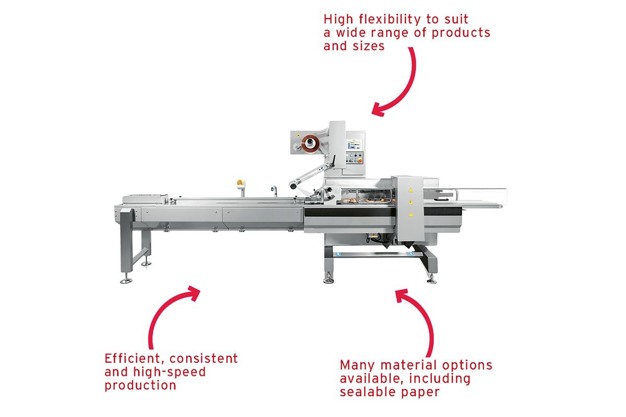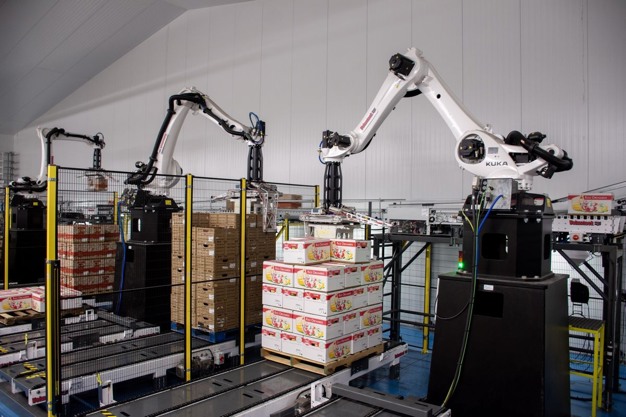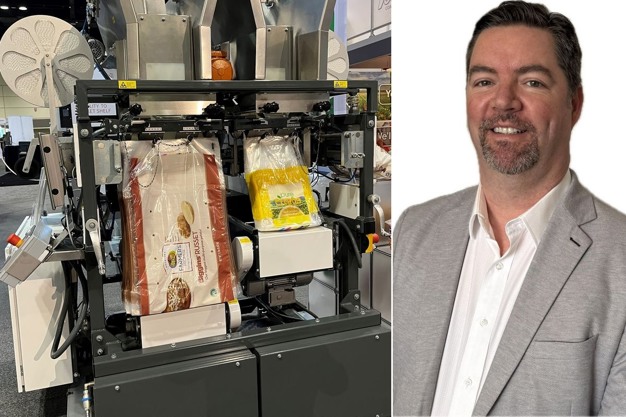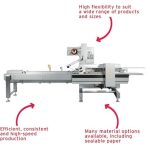What are the latest and greatest solutions in the fresh produce packaging industry? “I love to answer this question for a couple reasons,” says Wayne DeCou, Equipment Director for Volm Companies. “Our industry is an exciting one where steady innovation means there’s always a lot to talk about. Additionally, it gives me great pleasure to share equipment updates with growers and packers when I know they’ll make their operations a lot easier.”
Enhanced versatility
“What we’re seeing in general terms is a movement toward greater machine efficiency and enhanced versatility. More machine capabilities mean more choices overall for customers, so this is a tremendously positive direction.” A recent example of this is the introduction of the Flow Wrapper, a horizontal form, fill and seal machine that offers a wide range of material options, including sealable paper. Overall, this solution is capable of packing a wide range of products. The Bottom Seal version is designed for small and medium-sized products, such as punnets of plums, tomatoes, pears and tray-packed vegetables. The Top Seal version is ideal for irregular products with variable lengths, such as asparagus, broccoli, elongated bell peppers and more.
“Our new vertical form fill and seal machine, the VT2000 ML, is another standout that facilities have taken an interest in because of its impressive versatility.” This new machine allows customers to switch easily between a very wide range of bag styles. Whether a customer is packing Pillow, Block Bottom, Quattro, Gusset or Doy-style, this one machine will support every option. Changeovers are tool-free – and sealable paper is also possible. “Bonus points go to the VT2000 ML for being incredibly fast, super reliable and designed for easy access and minimal maintenance.”

Flow Wrapper
Robotic systems
When it comes to palletizing, robots are definitely a fan favorite – not just because they’re customizable, but because they automate a lot of difficult manual tasks.” To make these systems even easier to integrate, our latest bag-to-bin robotic systems are at least eight feet shorter, providing facilities with additional layout flexibility.” Beyond a more compact footprint, the redesign offers a sleek new end-of-arm tool, fewer components, greater efficiency, less maintenance and enhanced overall performance. “System changeovers to stack different SKUs or product types are seamless – and with only the touch of a button – as we have eliminated the need for mechanical adjustments.”
 Robotic palletizing
Robotic palletizing
Labor-saving solutions
Another trend DeCou is seeing when it comes to expansion of automation capabilities is the introduction of case packers. Members of the produce industry are recognizing this as a huge labor-saving opportunity, so they’re moving more and more in this direction. A standout addition is the BD808 Case Packer, which is a compact, high-speed and fully automated case packing system. Consumer bags are dropped into an intermediate chamber where they are staged ahead of a final deposit into the master carton. Depending on the bag size and other variables, this method produces pack rates of up to 80-85 bags per minute. Additional models are available as well, from purpose-built machines to pack clamshells or top-sealed trays, to highly flexible robotic models that can be adapted to a wide array of product types.
“Finally, when talking about versatility, I’d be remiss if I didn’t mention our Adjustable Wicket Bagger.” The Wicket Bagger has always been an incredibly popular solution, but traditionally it was available with either a small, standard or extra-large fill opening. This wasn’t always ideal for packers who run a wide range of bags and product sizes. But the Adjustable Wicket Bagger solves that challenge, packing 1–20-pound bags all in one machine. “Changing from one size to the next is quick and easy, so this is versatility at its best.”
Does greater sophistication mean equipment is more difficult to use? “Not at all. Instead, what we’re seeing is the exact opposite: solutions that are easier to operate all the time. They include more user-friendly controls, less maintenance and fewer adjustments.”
 Left: Dual Wicket Bagger. Right: Wayne DeCou.
Left: Dual Wicket Bagger. Right: Wayne DeCou.
Guidance for packers and growers
With so much going on, it can sometimes be difficult to stay on top of what’s emerging in the market. To help packers and growers stay current, Volm is creating new content that can be found online and on the company’s social media channels. For starters, a regular series called Machine of the Month has been launched to let people know what’s fresh and exciting in the Volmpack and Volmstack portfolio. In addition, a new quarterly online series has been launched, called Keeping It Fresh. In this feature, Volm spotlights some of the growers and packers who demonstrate leadership in the industry by embracing automation and other forward-looking strategies. “Finally, we know that most sheds take a lot of pride in the way they maintain their machinery. To complement those efforts, we’ve started a Quick Tips social media series, where our lead technician in Antigo, Wisconsin, shares his pointers for maintaining equipment in easy-to-follow steps.”
In conclusion, DeCou takes a minute to talk about fiscal responsibility as the produce industry deals with yet another period of global economic uncertainty. “As anyone in fresh produce knows, challenges caused by factors we can’t control are not the exception but the norm. However, no matter the climate, Volm remains committed to providing the best value in order to remain competitive. All of these efforts are a reflection of the deep pride we have in serving our customers so that we can continue to be recognized as your Most Valued Partner.”
For more information:
Wayne DeCou
Equipment Director
Volm Companies
[email protected]
www.volmcompanies.com
